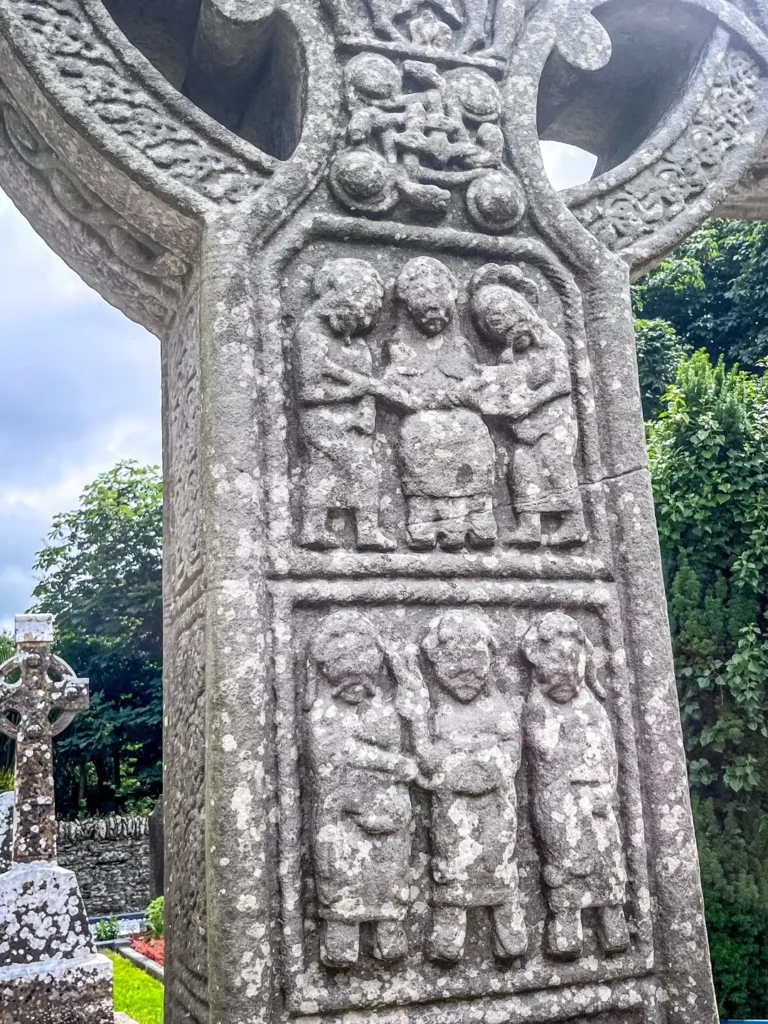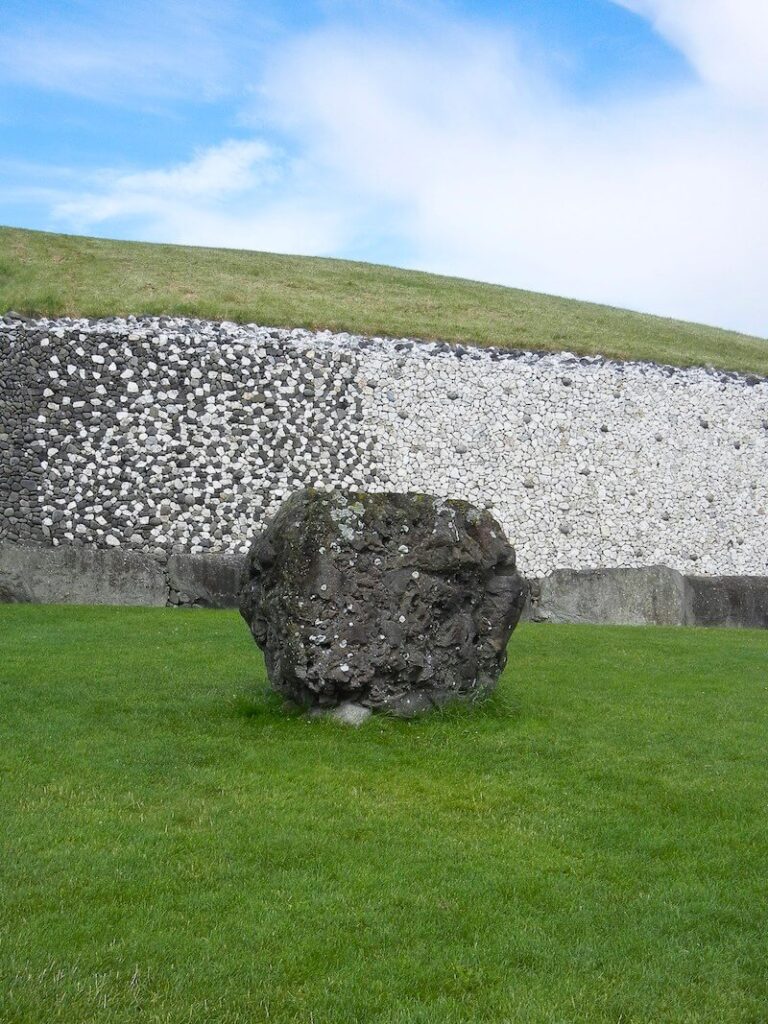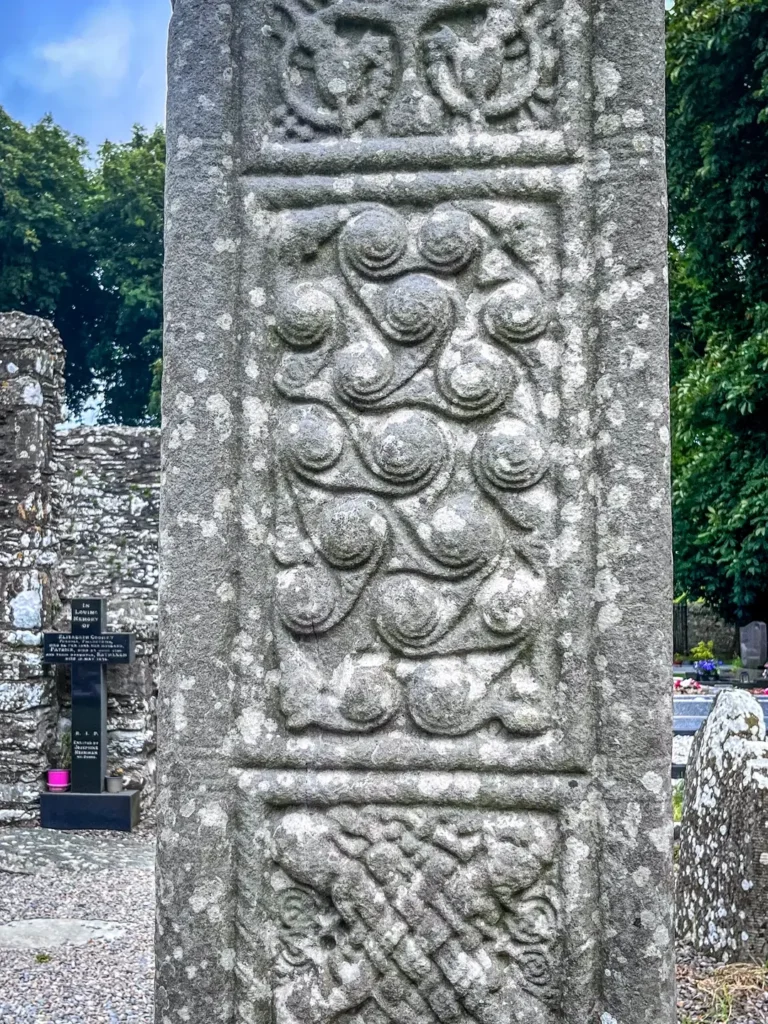Slane Village Ireland
Slane, a small village in County Meath, Ireland, holds a special place in Irish history and folklore. It’s not just a pretty spot; this place is packed with stories, from ancient kings to early Christian saints. The Hill of Slane, especially, is a real treasure trove of myths, legends, and historical events that have shaped Ireland. If you’re into old tales and cool historical sites, then exploring the slane folklore is definitely worth your time.
Key Takeaways
- Slane’s history goes way back, even before Christianity arrived in Ireland.
- The Hill of Slane is a big deal because of Saint Patrick’s famous Paschal fire.
- There are some pretty cool ruins on the hill, like an old friary church and a tall Gothic tower.
- Lots of old stories connect Slane to mythical figures and magical places.
- Slane has inspired a lot of art and music, including a well-known folk song and a hymn.
Ancient Origins of Slane
The Fir Bolg King Sláine
The story of Slane begins long before Saint Patrick. The Hill of Slane is thought to have been a significant site dating back to Neolithic times. Legend has it that Sláine, a king of the Fir Bolg, is buried on the hill. This connection gives the area its name. According to ancient texts, Sláine cleared the wood from the Brugh, which is associated with the construction of Newgrange, Knowth, and Dowth. This suggests a link between Slane and these other important prehistoric sites.
Sláine’s association with the area highlights the hill’s importance in Irish mythology and its potential as a site of ancient gatherings and rituals.
Duma Sláine Burial Mound
The summit of the Hill of Slane features a mound, now often referred to as a motte. While it was the site of a Norman castle built by Richard de Fleming in the 12th century, many believe it’s actually Duma Sláine, the burial mound of King Sláine. The Hill of Tara was first raised by Sláine of the Fir-Bolgs. This mound may have astronomical alignments, linking it to other ancient sites and suggesting a deeper, perhaps celestial, significance. It’s easy to miss this spot, as trees largely obscure it, but its historical weight is undeniable.
Prehistoric Earthworks
Beyond the prominent mound, there’s more evidence of prehistoric activity on the Hill of Slane. These earthworks suggest that the site was used for various purposes long before the arrival of Christianity. These could have been used for:
- Ritual gatherings
- Defensive structures
- Agricultural purposes
These features, though less obvious than the motte, contribute to the understanding of Slane as a place of importance in ancient Ireland. The Boyne Valley is visible from Slane. The presence of these earthworks reinforces the idea that Slane was a significant location well before its association with Saint Patrick and the arrival of Christianity.
Slane in Christian History
Slane’s story isn’t just about ancient kings and burial mounds; it also has a significant chapter in Christian history. The Hill of Slane became a center of religion and learning for centuries after Saint Patrick.
Saint Patrick’s Paschal Fire
The most famous Christian event associated with Slane is undoubtedly Saint Patrick’s lighting of the Paschal fire. This act, done in defiance of the pagan King Laoghaire at nearby Tara, is a powerful symbol of the arrival of Christianity in Ireland. It’s said that Patrick chose Slane because its elevated position allowed the fire to be seen from Tara, directly challenging the king’s authority. The lighting of the fire is still commemorated today, and it represents a turning point in Irish history.
Establishment of the Monastery
Following Patrick’s successful mission, Slane became an important religious site. While the details are a bit unclear, it’s believed that Patrick appointed Saint Erc as the first Bishop of Slane. A monastery was established, solidifying Slane’s role as a center for Christian worship and scholarship. This monastery played a vital role in spreading Christianity throughout the region. The Annals of the Four Masters even mention Slane as a place of importance.
Viking Raids and Resilience
Like many early Christian sites in Ireland, the monastery at Slane faced challenges from Viking raids. These raids were devastating, often targeting religious centers for their wealth and relics. The Annals of the Four Masters record a particularly destructive event in 948 AD, when Vikings burned the belfry of Slane, destroying relics and killing many people, including the Lector of Slane. Despite these attacks, the monastery at Slane showed resilience. It was rebuilt and continued to function as a religious center, demonstrating the enduring faith of the community. The friary church was restored in 1512, showing the community’s dedication to their faith.
Slane’s Christian history is a story of faith, defiance, and resilience. From Saint Patrick’s bold act to the enduring presence of the monastery, Slane played a key role in the spread and preservation of Christianity in Ireland. Even the attacks by Vikings couldn’t extinguish the flame of faith that burned brightly on the Hill of Slane.
Architectural Remains and Significance
Friary Church and College Ruins
Okay, so the Franciscan Friary on the Hill of Slane? It’s pretty cool. Built around the 15th century, the ruins are surprisingly well-preserved. You can still see spiral staircases that lead to the upper parts of the structure. It’s almost like stepping back in time.
Across from the Abbey, there’s a graveyard. Apparently, a statue of Saint Patrick marks the spot where he lit his famous fire. Some of the plots are still in use, which is kind of wild. Behind the monastery ruins, there’s a big mound covered in trees – supposedly, it’s the burial place of some ancient Irish king. I wonder if they used luxury chauffeur services back then?
Gothic Tower Features
I’m no architect, but the Gothic tower at the Friary is something else. I mean, you can see the remains of what must have been some impressive stonework. It makes you wonder what it looked like in its prime. The tower probably had some pretty amazing views of the Boyne Valley. I bet it was a strategic spot back in the day.
Abandonment of the Friary
So, what happened to the Friary? Well, like a lot of places, it wasn’t immune to the passage of time and historical events. I don’t have all the details, but I know that it was eventually abandoned. It’s a shame, but at least we can still see the ruins. It’s a reminder of the past and a cool place to visit. It’s interesting to think about the people who lived and worked there, and what their lives were like. It’s a shame that the Hill of Tara is so close, I’d love to see that too.
It’s hard to imagine what life was like back then. The Friary must have been a bustling place, full of activity. Now, it’s just a quiet ruin, a reminder of a different time. It’s a place to reflect on history and the passage of time.
Here are some things that were probably there:
- A round tower
- High cross
- Tomb-shrine
Mythological Narratives of Slane
The Healing Well of Tuatha Dé Danann
Slane isn’t just about historical battles and religious figures; it also pops up in some pretty cool mythological stories. One of the most interesting is the legend of the healing well. Apparently, the Tuatha Dé Danann, a supernatural race in Irish mythology, used this well to heal their wounds after battles. Imagine a place so powerful that it could mend even the most serious injuries! It really adds a layer of magic and wonder to the already fascinating history of Slane.
Astronomical Alignments of Duma Sláine
Duma Sláine, believed to be the burial mound of King Sláine, isn’t just a pile of earth. Some people think it has astronomical significance. The mound might be aligned with certain stars or celestial events, making it a kind of ancient observatory. This idea connects Slane to the cosmos, suggesting that the people who built it had a deep understanding of the sky.
Legends of King Sláine
King Sláine of the Fir Bolg is a central figure in the mythology surrounding Slane. He’s not just some king from the past; he’s a legendary figure whose story is woven into the very fabric of the place. According to ancient texts, Sláine cleared the wood from the Brugh, which is now known as the area around Newgrange, Knowth, and Dowth. This act alone makes him a pretty important character in Irish mythology. He was later buried at Druim Fuar, which then became known as Duma Sláine, giving the hill its name. The legends paint him as a powerful and influential ruler, whose legacy continues to resonate through the ages. You can find more about the Fir Bolg King Sláine in other accounts.
The stories surrounding King Sláine are more than just tales; they’re a way of understanding the connection between the land, its people, and their history. These narratives help to keep the past alive, reminding us of the rich cultural heritage that Slane holds.
Here are some key aspects of the legends:
- Sláine’s role in clearing the wood from the Brugh.
- His burial at Duma Sláine.
- His significance as a ruler of the Fir Bolg.
Historical Figures Associated with Slane
Slane’s history is intertwined with the lives of several notable figures, each leaving their mark on the area’s cultural and historical landscape. From religious leaders to exiled royalty, the stories of these individuals contribute to the rich tapestry of Slane’s past. These figures helped shape Slane into the place it is today.
Saint Erc, First Bishop of Slane
Saint Erc holds a special place in Slane’s history as the first bishop appointed by Saint Patrick. His presence solidified the area’s importance as a center for early Christianity in Ireland. Erc’s leadership helped establish the monastery on the Hill of Slane, which became a significant religious and educational institution. He is remembered for his piety and dedication to spreading the Christian faith. The appointment of Saint Erc marked a turning point for Slane.
Dagobert II’s Exile and Education
The story of Dagobert II, heir to the throne of Austrasia, adds an intriguing layer to Slane’s history. Exiled to Ireland after his father’s death, Dagobert is said to have spent his formative years at the Monastery of Slane. During his time there, he received an education and even attended the court of the High King of Tara. This connection to European royalty highlights Slane’s role as a place of refuge and learning. It’s fascinating to think of a future king growing up in this small Irish village. Dagobert’s exile and education in Slane is a unique chapter in the area’s history. It’s a reminder that even seemingly remote places can play a role in larger historical events. The Merovingian kingdom was far away.
The Fleming Barons of Slane
The Fleming family played a significant role in Slane’s history for centuries. Arriving in the 12th century, Richard Fleming established a motte and bailey, marking the beginning of their lordship. The Flemings were the barons of Slane until the 17th century, when the Conyngham family replaced them. Their legacy includes the construction of Slane Castle, which remains a prominent landmark today. The Flemings’ long tenure shaped the social and political landscape of the area. They were important landowners.
The Fleming family’s influence extended beyond mere land ownership. They were patrons of the arts and played a role in the development of local traditions. Their departure marked a significant shift in the power dynamics of Slane, paving the way for new families to shape the area’s future. The Fleming family’s story is a reminder of the ever-changing nature of power and influence throughout history.
Here’s a quick look at the timeline of the Fleming family:
- 1170s: Richard Fleming arrives in Slane.
- 12th-17th Centuries: The Flemings are lords of Slane.
- 17th Century: The Conyngham family replaces the Flemings.
Cultural Impact and Artistic Representations

The Folk Song "Slane"
Slane’s cultural impact extends into the realm of music, with a folk song simply titled "Slane." While not as widely known as some traditional Irish ballads, it captures the spirit of the area. The song often speaks to the beauty of the Boyne Valley and the historical significance of the Hill of Slane. It’s a piece that locals cherish, and it sometimes appears in local music sessions.
"Be Thou My Vision" Hymn Connection
One of the most significant connections between Slane and artistic expression lies in the hymn "Be Thou My Vision." The tune to which this hymn is commonly sung is called SLANE. It’s believed that the melody was derived from an old Irish folk tune. The words of "Be Thou My Vision" are often attributed to Dallán Forgaill, an Irish Christian scholar from the 6th century. The hymn’s popularity has spread far beyond Ireland, making it a staple in churches of various denominations worldwide. The hymn’s tune is a testament to the enduring cultural legacy of the area.
Ballads and Local Poetry
Slane and its surrounding areas have inspired countless ballads and poems over the centuries. These artistic works often focus on:
- Historical events that took place in Slane.
- The natural beauty of the Boyne Valley.
- Legends and myths associated with the Hill of Slane.
- Local heroes and figures.
Local poets and songwriters continue to draw inspiration from Slane’s rich history and stunning landscapes. These works help to preserve the area’s cultural heritage and pass it on to future generations. The ballads and poems serve as a reminder of Slane’s importance in Irish history and folklore. They are a way to keep the stories alive and ensure that they are not forgotten.
These artistic representations contribute to the ongoing narrative of Slane, ensuring its place in Irish culture. The artistic expression inspired by Slane is a testament to its enduring appeal.
Geographical and Historical Context
Location on the River Boyne
Slane’s location is pretty important. It sits right on the River Boyne, which has been a key waterway for centuries. The river isn’t just a pretty sight; it’s been used for trade, travel, and even defense. You can imagine how much easier it was to move goods and people when you had a river to do it for you. The River Boyne itself winds through the village, almost like a silent observer of all the events that have unfolded there.
Views of the Boyne Valley
Being up on the hill in Slane gives you some amazing views. You can see the whole Boyne Valley spread out before you. It’s not hard to understand why people have wanted to control this area for so long. The valley is fertile, and the views let you keep an eye on everything that’s going on. The strategic advantage of being able to see for miles around is a big deal.
Strategic Importance of the Hill
The Hill of Slane has always been a spot of strategic importance. Over the centuries, different groups have recognized its value. The Celts understood the importance of this strategic strong point, and later, the Anglo Normans also saw its potential. It’s a place that has been fought over and controlled by various powers because of its location and the views it offers. It’s not just a pretty hill; it’s a place that has shaped the history of the area.
Slane’s position made it a focal point for various historical events. Its location on the River Boyne and the commanding views from the hill meant it was always going to be a place of significance. The area has been inhabited since the Neolithic era, and its story is intertwined with the broader history of Ireland.
Here’s a quick look at some key historical periods:
- Neolithic Era: Early habitation.
- Early Christian Period: Association with Saint Patrick.
- Norman Era: Construction of structures by the Normans.
- 1690: The Battle of the Boyne took place nearby.
Want to learn more about how places and times shaped history? Head over to our website! We’ve got tons of cool stuff that breaks down the past in a way that’s easy to get. Don’t miss out on understanding the world around you!
Conclusion
So, what’s the big takeaway from all this talk about Slane? Well, it’s pretty clear that this place is more than just a spot on a map. It’s got layers of stories, going way back before anyone even thought about Christianity. From ancient kings to Saint Patrick, and then all those folks who kept learning alive there, Slane has seen a lot. It’s a reminder that some places just hold onto their history, even when things change around them. You can still feel that old magic, or whatever you want to call it, when you visit. It’s a pretty cool thought, actually.
Frequently Asked Questions
Where is Slane and why is it special?
Slane is a village in County Meath, Ireland, known for its rich history and folklore. It’s located on a hill overlooking the River Boyne, offering amazing views of the surrounding area. Many important historical and mythical events happened here.
What was Slane like before Christianity arrived?
Long before Christianity, Slane was important because of the Fir Bolg king, Sláine, who is said to be buried there in a mound called Duma Sláine. This mound might also have special connections to the stars.
How did Christianity become important in Slane?
Saint Patrick lit a special fire on the Hill of Slane to show his faith, even though the pagan king didn’t want him to. This event helped bring Christianity to Ireland. Later, a monastery was built there, which stayed important for a long time, even after Viking attacks.
What old buildings can you still see at Slane?
You can still see the old ruins of a friary church and college, including a tall Gothic tower. These buildings show how important Slane was as a religious and learning center in the past.
Are there any myths or legends about Slane?
Yes, there are many old stories about Slane. One tells of a magical healing well used by the Tuatha Dé Danann, an ancient group of people. There are also tales about King Sláine and how the burial mound is connected to the stars.
What kind of music or art is connected to Slane?
Slane is known for an old Irish folk song also called “Slane.” This song is connected to the famous hymn “Be Thou My Vision.” There are also other poems and songs that tell stories about the area and its history.





